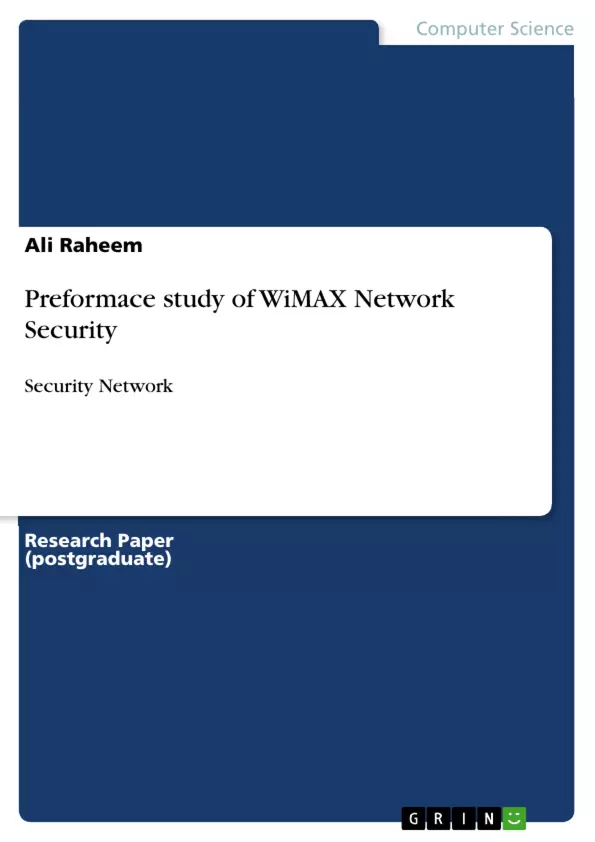Undeniably, networks have become very important techniques of exchanging information (data) in fast ways. (WIMAX) World Interoperability for Microwave Access is one of the greatest technologies in the communication area. WIMAX has been used widely in telecommunication for long distance communication. From this point, this paper will explore four important sections related to this technique. Firstly, it will discuss the performance conduct of the WIMAX as compared to that of Wi-Fi. Secondly, it will critically evaluate the current solutions for the security problems in WIMAX network. Thirdly, it will attempt to design a new method to improve the security performance of WIMAX network. Fourthly, it will provide a security system that can be applied in real life applications to support the security performance of WIMAX network.
Inhaltsverzeichnis (Table of Contents)
- ABSTRACT:
- 1. INTRODUCTION:
- 2. WIMAX VS WI-FI
- 3. EVAALUATION WIMAX SECURITY:
- 4. WIMAX SOLTTION SECURITY AND IMROVEMENT:
- 5. CONCLUSION:
- 6. REFERENCES.
Zielsetzung und Themenschwerpunkte (Objectives and Key Themes)
This paper aims to investigate the performance and security of WiMAX technology, providing an in-depth analysis of its strengths and weaknesses. It compares WiMAX to Wi-Fi, evaluates current security solutions, and proposes a new design to enhance security performance.
- Performance analysis of WiMAX compared to Wi-Fi
- Evaluation of current security solutions for WiMAX networks
- Design of a new method to improve the security performance of WiMAX networks
- Development of a security system for real-life applications to support WiMAX network security
- Comparison of fixed and mobile WiMAX technologies
Zusammenfassung der Kapitel (Chapter Summaries)
- Abstract: This section provides a brief overview of the paper's objectives and key findings, highlighting the importance of WiMAX technology and its security challenges.
- Introduction: This chapter introduces the concept of WiMAX, discussing its background, technology, and its relevance in modern communication. It explains the different types of network services (PAN, LAN, WAN) and WiMAX's position as a next-generation wireless technology. It also provides a brief overview of the technical aspects of WiMAX, including its connection to IEEE standards and its operating principles.
- WiMAX vs. Wi-Fi: This chapter compares the performance characteristics of WiMAX and Wi-Fi, highlighting the advantages and disadvantages of each technology. It examines factors such as speed, range, cost, and security implications.
- Evaluation of WiMAX Security: This chapter focuses on the security vulnerabilities and challenges faced by WiMAX networks. It discusses the existing security solutions and their effectiveness in mitigating these vulnerabilities.
- WiMAX Security Solutions and Improvement: This chapter delves into the design and development of new security solutions for WiMAX networks. It proposes specific methods to enhance security performance and discusses their potential impact on real-world applications.
Schlüsselwörter (Keywords)
This paper focuses on the performance and security aspects of WiMAX technology, exploring key themes such as network technology, communication systems, wireless networks, security vulnerabilities, and security solutions. The paper delves into the comparison of WiMAX and Wi-Fi, the evaluation of existing security solutions, and the design of new approaches for improving security performance in WiMAX networks.
- Citation du texte
- Ali Raheem (Auteur), 2011, Preformace study of WiMAX Network Security, Munich, GRIN Verlag, https://www.grin.com/document/200705



